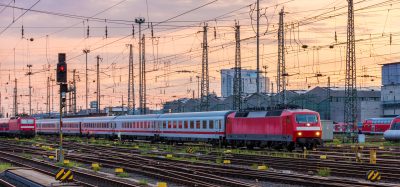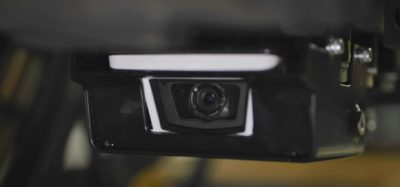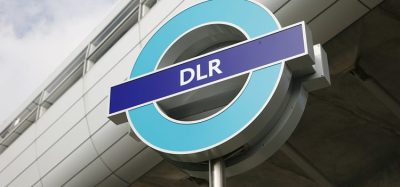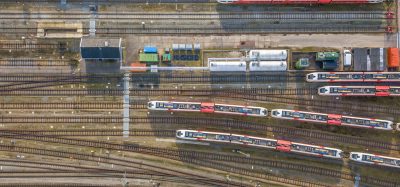Overcoming barriers to the Single European Railway Area
Posted: 6 October 2025 | Ivan Beltramba | No comments yet
Ivan Beltramba, Railway and Transportation Engineer, discusses the challenges and potential solutions for achieving a unified overhead electrification system across Europe, a critical step towards the Single European Railway Area (SERA).
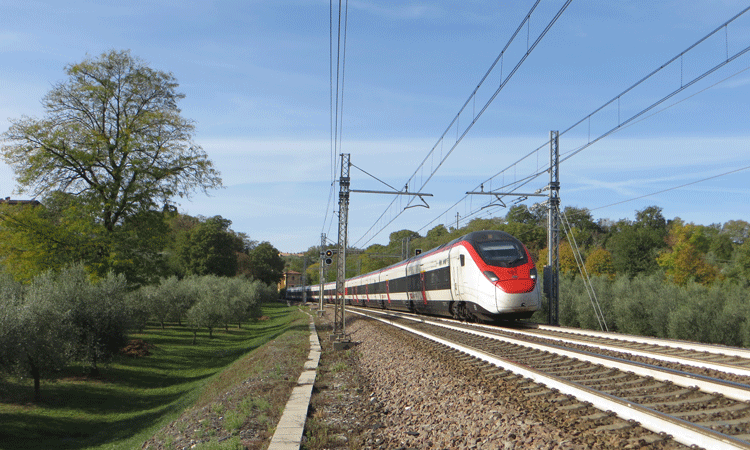

c: Vittorio Cervigni
Let’s start with two simple questions:
- Can dirty diesel trucks and buses go everywhere in the EU and outside? Yes, they can.
- Can clean electric trains go everywhere in the EU and outside? No, they cannot.
Since the European Commissions declared 2021 “The European Year of the Railways” little has changed to the interoperability of EU’s railways, so let us look at a long-lasting problem waiting for a solution since the post-WWII era: the unified overhead electrification.
This is a great obstacle, one of five1 to reach the Single European Railway Area (SERA).
Join our free webinar: Rail cyber-security in a time of technological and regulatory transformation
Join our expert panel, including speakers from Nokia and Siemens Mobility, to explore the critical convergence of cybersecurity and 5G rail comms.
Date: 3 Dec | Time: 15:00 GMT
Can’t attend live? No worries – register to receive the recording post-event.
The “Next Generation EU” or “The Green Deal” could be the right ways and timing to reach the “plain field” railways strongly need to be a reasonable alternative.
The “Next Generation EU” or “The Green Deal” could be the right ways and timing to reach the “plain field” railways strongly need to be a reasonable alternative to the trucks’, planes’ and cars’ empire in transport. Besides positive effects for CO2 reduction.
[NB. These observations apply to EU-Member States with 1435- and 1668-mm track gauges (in the hope that no one follows the Brexit example…), not to MS with 1520, 1524- or 1600mm gauge if they do not regauge with the 1435mm EU-standard. In fact, the MS with 1668mm track seem committed to the conversion of at least part of their network, a jump toward SERA.]
European railways’ four electric shocks
Once upon a time, trains were headed by steam locomotives, fuelled with coal, oil or wood. Coal was costly and dirty, and the crew in the cab had a hard and dangerous working environment, especially in tunnels. At the end of the 19th century, the first attempts to avoid coal were done by low voltage DC electrification or battery trains: T.A. Edison’s inventions were at stake in that period, starting with trams. After the wires went live for them, railways also opted for the “white coal”, adopting overhead or third rail electrification with tensions in the 600 to 750 V range. After the initial satisfaction with the performance of the locomotives and the avoided dirt and fumes, a big problem was promptly arising: the limited power of low voltage systems, requiring substations at 4-5km intervals on heavy traffic sections. DC-low voltage systems are still used by LIRR and MN in the U.S., and by Network Rail in Southeast England, the third rail energised at 750 V.
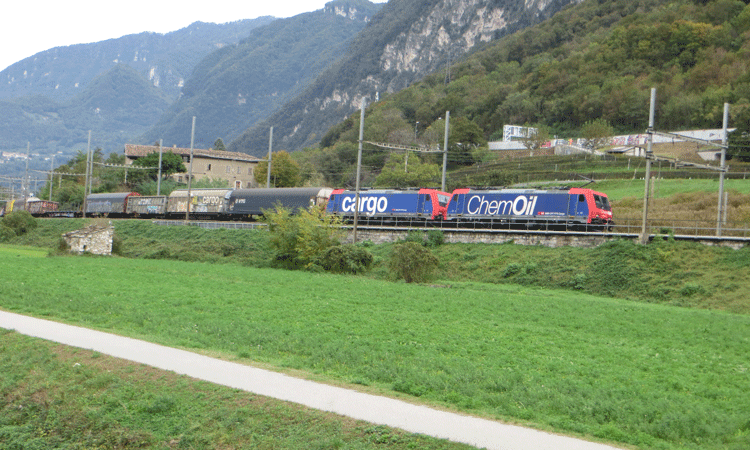

c: Vittorio Cervigni
Soon, the discoveries and inventions of Nikola Tesla let the AC current seem to be the better solution: lesser problems with power transmission, higher voltage with easy elevation and reduction, and so on, but the power control at the start of the train was a nightmare. At the turn of the century, thanks to the expertise and inventions of Austro-Hungarian genius Kálmán Kandó, the current used was three-phase AC, with complicated twin wires overhead: the world’s first main line overhead electrification was in Italy’s Valtellina in 1902. The current deployed at that time was medium voltage in Europe (3-3.6kV, 15, 16⅔ or 25 Hz), and high voltage on GN’s old Cascade Tunnel in the Rockies (6600 V, 25 Hz). Despite the twin wires overhead, in Italy the system gained good success, reaching at the plateau more than 2,000km of lines, mostly in the mountains, with few isolated districts. The simply electrical arrangement in the locomotives caused the automatic switch to regenerative braking when exceeding the max speed, but the limited power output led in some cases to a 11km pace for the substations (on the 23,5‰ steep Brennerpass line in Italy, wired in the late 1920s). The last Italian 3-phase line was converted to 3kV DC on 24 May 1976. Only few Swiss tourist lines survive today with this system.
The limited speed (100km/h) of the 3-phase overhead was not a problem in the early 20th Century, but the aim of easier systems and faster trains (steam locomotives were running at 140km/h and more) leaded again to DC, with the wires (in few cases the third rail) energised with 1.2-1.5kV. The success was immediate, and thousands of kilometres were so wired in Europe: The Netherlands, France, Ireland’s DART and the S-Tøg in København, together roughly 8,000km, are so energised. But on steep gradients (e.g. the line to the Frejus tunnel) the substations have a pace of less than 10km. With overhead wires of cross section of 440mm² and more.
The system is very expensive and can be dangerous given the high currents injected in the wires: if they break apart and touch the tracks, sometimes the ultra-rapid safety switches do not intervene because the short-cut current is roughly the same used by the locomotives.
Meanwhile, after WWI, in Germany, Austria and Switzerland (and later in Sweden and Norway), due to the cheap hydropower electricity, steep gradients and long tunnels in the mountains, another AC system became the standard: 15kV 16⅔ Hz single-phase. The locomotives had to haul a heavy transformer with them, but the good shape of the tracks avoided problems. On the Gotthard’s line 26‰ grades with very tight curves, the impressive behemoths Ae 8/14 hauled trains exceeding 700t, reinjecting energy from the dynamic brake into the wires when running downhill. The high voltage allowed substations with 50km pace on flatland and 30km on mountains, with 220mm² cross section overhead lines.
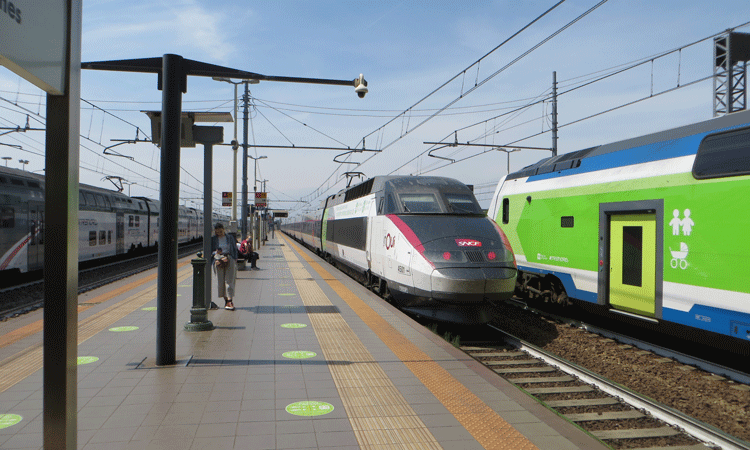

c: Vittorio Cervigni
Unfortunately, the odd 16⅔ Hz frequency (chosen to avoid complicated gears between axles and motors) brought the need for dedicated generating stations, converter substations and high voltage transmission lines. So, the costs for an extensive electrification soared and only Switzerland reached (after WWII) a 100% electric operation of the network, but not Germany, Norway, Sweden and Austria, only nowadays heavily investing in this sector. And, given the different frequency of the current, a huge amount of generation capacity is locked for railway use only.
Across WWI Butte Anaconda and Pacific and the ill-fated Milwaukee Road (U.S.), thanks to the evolution in insulation and gears, gained success with the 3kV DC overhead, promptly followed in the twenties from Italy, Belgium and Spain, later by Poland, and Czechoslovakia. Slovenia at that time was part of Italy and received the 3kV DC overhead, which reached Zagreb, both via Rijeka and Ljubljana. At the beginning, this system seemed better performing as the 1.5kV DC. But again, with the trains’ tonnage soaring, traffic increasing and the arrival of electronic high-power locomotives, the pace of substations on steep lines is nowadays in the 10km range, and on high traffic and moderate gradient lines 15km are usual.
The Brenner pass line on the Italian slope today has the same number of substations (with 440mm² cross section wires) like the old 3-phase, abandoned there in the summer 1965. Not enough, some Italian high-speed lines in the seventies and eighties received 610mm² wires and other new electrifications in the mountains or for freight trains are now wired with 540mm². On main lines, the intense train circulation and the high currents imply a rapid wear of the costly copper wires, with their substitution each four or five years, during four hours of service interruption for each section of 1800m.
Finally, after some experiments in the early thirties and again building on Kandós inventions of the twenties, another AC system was developed and gained success: the 25kV, 50Hz single-phase electrification, which used the “industrial frequency” power from the grid. After WWII, this system was the standard for all new electrifications around the world. Indeed, the use of only one phase out of three (power plants produce 3-phase electricity, high voltage power lines have three or six wires) brought some complications in the substations, to avoid unequal loads on the grid. With the 25kV~ system the substations are up to 70km apart on flatland, and roughly 40km on the mountains or in high density traffic areas.
Some countries (France, Slovakia, Czechia) have now two systems and are converting some of the older lines at a very slow pace. Croatia completed the conversion of the 3kV lines (started in the eighties as Yugoslavia) 10 years ago. Czechia announced in 2017 the complete switchover for 2040; probably Slovakia will follow that step. Other countries, like Spain, Belgium, Italy and The Netherlands, have chosen the 25kV~ for the high-speed lines and some connecting routes, but no plans are being drafted for the conversion of other lines. The Netherlands in 1987 decided to abandon the 1.5kV= overhead in favour of the 25kV~, but after the last cost revision in 2012 (estimate: €10 billion), cancelled the project; indeed, some lines were wired “convertible” (like the Lelystad-Zwolle). Maybe the cost of conversion, stated in 1997 at 3 billion Guilders, the cost of two or three-systems locomotives (connecting railways are 3kV= or 15kV~) and feared interferences with the signalling system spelled the abandonment.
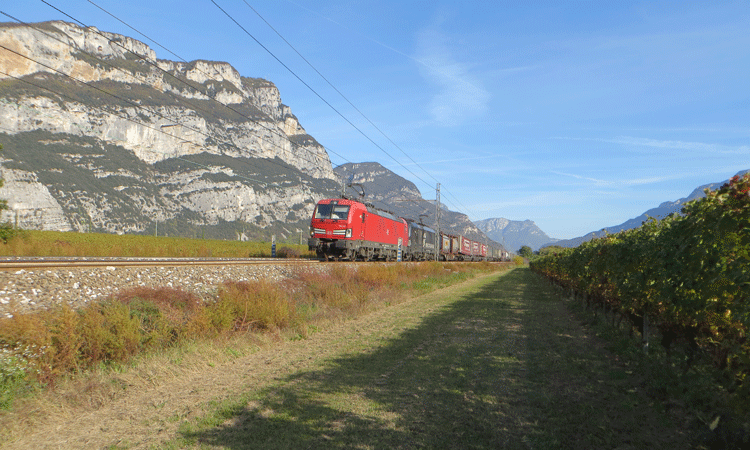

c: Vittorio Cervigni
A practical way to a definitive solution (and huge energy savings!)
We saw that the elimination of the steam traction, with the dirty coal or oil burning, led in some cases to extensive electrification, each state jealous of his own system. Today, Europe’s railways feature a patchwork of electrification systems, including 1.5 and 3kV DC, 15kV 16.7 Hz, and 25kV 50 Hz overhead lines. This often results in electric “islands” surrounded by different systems, as seen in countries like The Netherlands, Belgium, Denmark, Spain, Portugal, France and Italy.
A diesel-powered and steep local line in the north of Italy, abandoned by the State in 1991 (South-Tirol’s Merano-Mals, 60km), was re-opened by the new owner South-Tyrol in 2005 with renovated infrastructure and new state-of-the-art trains. The success of good service, new trains and barrier-free access was astonishing, exceeding 6000 pax/day (during the FS-tenure less than 500…). DMUs became small and the expenditure for servicing topped five million/year, so it was decided to electrify the line and buy new trains. The Infrastructure Manager (STA of Bolzano) made a careful Cost-Benefit-Analysis and discovered that the 25kV AC wiring is cheaper to install and to maintain and, compared with Italy’s heritage 3kV DC system, implies an energy saving of around 33%. In fact, using a commercial simulation tool, assuming an overall efficiency of 100% for the 25kV system, the 3kV has an efficiency of 67%, the 15kV of 89% and the 1.5kV of 55%.
Nowadays, most new locomotives and EMUs produced are born as 4-system platforms, and if a Rail Undertaking (RU) wants only one or two systems, some components are removed. Others remain still in place and work as filters to avoid harmonic electricity from the electronics to be injected into the wires, disturbing other vehicles or the signals. And, you will wonder, a 4-system locomotive is now only 5-8% more expensive than a one-system unit. Unthinkable 40 years ago: in the seventies the TEE network saw the traction switch from diesel to electric, in some cases with multisystem locomotives, at that time very expensive (double the cost of a standard locomotive), but mostly with time-consuming locomotive change at the borders.
So, it’s astonishing to see that now a lot of RUs are still buying or leasing only 1-system vehicles, also if they have other systems in their State or at the borders, no matter if the 25kV is limited to the HS-lines. In fact, most HS lines are also suitable for freight trains, and, in some cases, those lines saw construction costs rocketing to be interoperable.
Until 15 years ago or so at the “electric borders” locomotives were changed, with costly and time-consuming shunting: only some high-speed trains didn’t stop and changed the traction configuration at full speed. Nowadays, it’s usual to see the trains (freight trains too) stopping at the border station only one minute to change the driver, and sometimes running through.
Even the EU “Connecting Europe Express”, which concluded his 36-days journey on 7 October 2021, changed the locomotive at each border. A bad example.
But if the multisystem units are now relatively cheap, the conversion of the wires’ feeding to a unified system is expensive (more than 100.000 €/track-km), and new 25kV electrifications are in the 300.000 €/km range but can also lead to large direct and indirect advantages for both the IMs and the RUs and their balance: lesser maintenance costs and energy consumption, easier regenerative braking, better utilisation of the generating plants and of the transmission lines. In Italy, the state-owned IM RFI declares a yearly energy consumption of roughly 4500 GWh. Given the efficiency calculated by STA, that figure could be shrinking to 3000 GWh. And STA calculated also that the wires need to be substituted each 50 years, instead of 10 years or less. STA’s investment will be repaid after roughly 12 years of electric operation. You can calculate the savings of a 25kV electrification in your homeland if another system is now in use.
So, what should be done, and how, to erase the change of locomotives at the “electric borders” and to reduce the cost of conversion to 25kV of the overhead’s feeding in the EU?
The Union should issue a 25% contribution for the purchase of 2- or more system LOCs/EMUs with 25kV capability, or the conversion to 25kV capability of “young” units. Then, the Loc&Pas and Energy TSIs should be recast to admit only 25kV capable units as compliant.
On the other hand, the conversion of existing lines to 25kV and the new wiring of diesel routes should be contributed at 50%, with a ban for public money from the MS and the EU for new lines if not 25kV energised. After a few years, the Energy TSI should be recast to allow only 25kV lines as TSI compliant: undoubtful a bold move to encourage the MS (thanks to the contributions) to adopt the new standard as soon as possible. With the same move, only 25kV should be authorised for new lines, regardless of the purpose: freight, HS or mixed.
It will likely take more than 25 years to phase out the legacy systems. For example, Italy took 30 years (from 1946 to 1976, for 2,000 km) to abandon the outdated 3-phase system and fully transition to 3 kV DC. Less than 15 years later, the newly planned high-speed lines adopted the 25 kV system. In spring 2005, the second-generation high-speed Roma-Napoli line was energised and opened for testing.
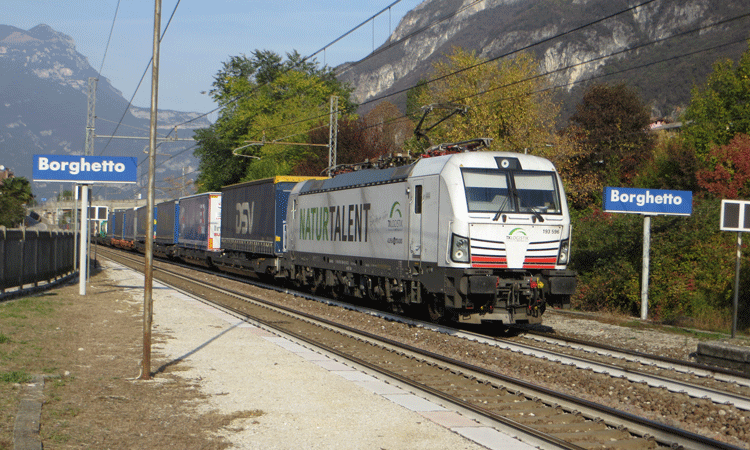

c: Vittorio Cervigni
The 25kV has another practical advantage – technicians of Italy’s IM RFI developed a circuit modification to avoid ice formation during the winter. With a clever configuration, the wires of the two tracks are short-circuited together, isolated from all installations, and energised with 25kV and 700 A. Due to their small cross-section, warming the wires for 40 minutes by a few degrees above zero is enough to prevent ice formation and melt any sleeves.
Like South Tyrol’s STA move, InfraGo (DB Netze) should be similarly bold and announce the adoption of 25kV for the Fehmarn Belt new line from Puttgarden to the junction north of Lübeck (Bad Schwartau). With the 25kV system, Germany could scrap roughly half the substations, Italy more than 65%, and The Netherlands almost 75%, reducing the overland high voltage lines and the land occupied. And the costly copper wires would be far less worn.
A possible timescale
The Czech Republic has already (2017) decided to convert the 3kV lines to 25kV; and Slovakia should follow, boosting the changeover of both networks in five years thanks to an EU contribution.
With a similar step, the 1.5kV DC islands of The Netherlands and South France could be converted in the same five years, eliminating this low power system. The Netherlands should start from the North and the Southeast. France from Paris to the Southwest (Spain border), then again from Paris to the border with Italy, limiting the 1.5kV DC to Paris’ RER for the following 10 years.
The 3kV DC islands Spain, Italy, Slovenia, Belgium and Poland should start planning and work for the switchover of their networks as soon as possible. Italy could start from the Northwest, Slovenia from the East, Poland and Belgium from the South, with Belgium anticipating the conversion to the same time as The Netherlands. Spain should start from the border to Portugal, a 25kV island. The completion 10 to 15 years after the 1.5kV abandonment could be a reasonable timing.
The two 15kV blocks can be ironed out as follows: Sweden should start from the South, in contact with Denmark’s 25kV system. Norway, not an EU MS, if interested, should start from the North and the West, reaching the Oslo area and then Sweden. This move could take 15 years but can end well before the conversion of the other 15kV systems.
Germany, Austria (and non-EU Switzerland) maybe will take 25 years, Germany should start from the border with Denmark and the west (France, The Netherlands), Austria from the borders with Hungary, the Czech Republic and Slovakia, Switzerland from the borders with France. Lastly, the S-Bahn lines of the greater metropolitan areas (München, Stuttgart, Nürnberg, Frankfurt, Hannover, Rhein-Ruhr, Rhein-Sieg, Rhein-Neckar, Bremen, Wien, Zürich, Bern) would be addressed.
So, what are we waiting for? Rome was not built in one night, but the sooner we start, the sooner we finish. Having the same overhead electrification in the Union will be a heavy signal of real interoperability across the continent. This represents another step toward the Single European Railway Area. Meanwhile, trucks, buses and cars with their polluting diesel engines, which produce significant amounts of CO2 emissions, can travel freely across the Union, even if they are left-hand drive vehicles. Why should electric locomotives not do the same? And if Norway and Switzerland continue to remain electrification islands, that’s their concern. The EU should invest in this direction, instead of the very expensive battery and hydrogen trains and should not allowing heavier and longer megatrucks until SERA is achieved.
Special thanks for the very precious information to Marco Stabile, Michael Prader, Paride Delucca, Michele Mancin, Pier Luigi Papini and Paola Bianco.
Reference
1. The other four are: the operating language(s), the track gauge(s), the signal system(s) and the automatic coupler.


c: Beltramba
Ivan Beltramba, a South Tyrol native, is a Railway and Transportation Engineer. Since 1999, he has worked for local governments in the north of Italy, in charge of rail related issues like new trains, scheduling, new infrastructure, improvements on existing lines, both for commuter and freight traffic. Besides Italian, he is fluent in German and English.
Global Railway Review Autumn/ Winter Issue 2025
Welcome to 2025’s Autumn/ Winter issue of Global Railway Review!
The dynamism of our sector has never been more apparent, driven by technological leaps, evolving societal demands, and an urgent global imperative for sustainable solutions.
>>> Read the issue in full now! <<<
Related topics
Digitalisation, Electric/Hybrid Rolling Stock, Electrification & Cabling, Infrastructure Developments, Sustainability/Decarbonisation
Related regions
Austria, Belgium, Czech Republic, Denmark, Europe, France, Ireland, Italy, Portugal, Slovenia, Spain, Sweden, Switzerland, The Netherlands, UK




